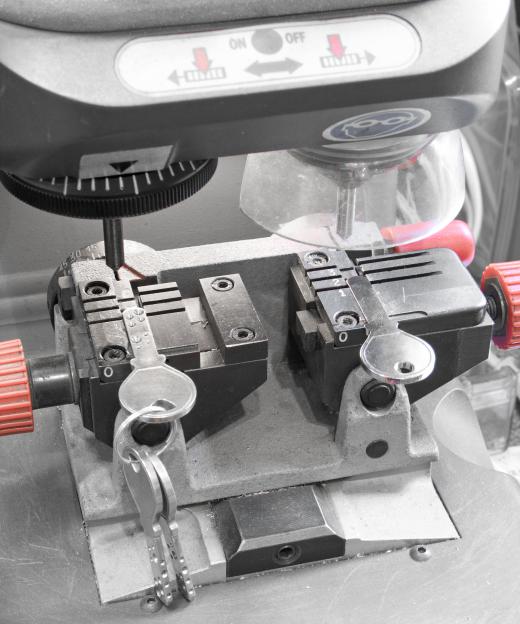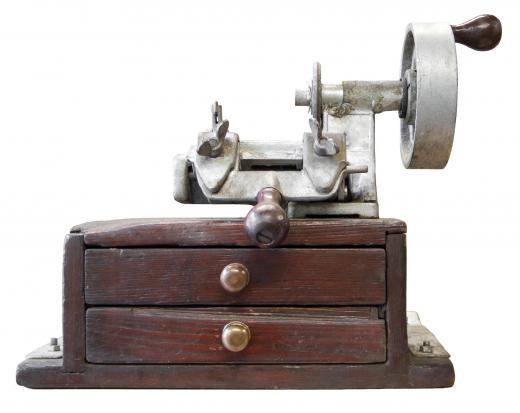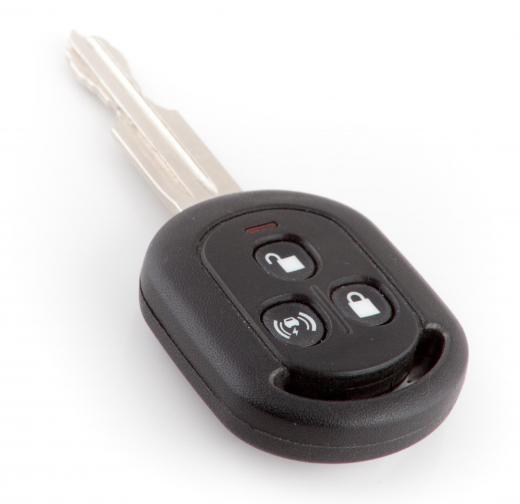A key cutting machine is a machine that is used to cut the unique profile of a key. There are many different types of these machines, usually based on the type of key being cut — car keys, skeleton keys, common house keys, tubular keys. Most machines work by tracing the profile of one key in order to cut a new one. Some of the different types are automatic, code, laser, manual, and tubular key cutting machines.
A manual key cutting machine is perhaps the least accurate of all such devices. Still, they typically work fine for common house keys and, as a result, they are often found in local home improvement stores. These machines work by clamping both the original key and the key to be cut on top of each other. This is in contrast to automatic machines where the two keys are secured in separate, but parallel, locations. In manual key cutting, the operator manually operates the machine to trace the profile on the cut key, and in doing so, the machine cuts the blank key to have a matching shape.

An automatic and semi-automatic machines do most of the work by themselves, though automatic versions require even less operator assistance than their semi-automatic counterparts. The operator secures the original key onto the machine with the help of a vice grip while the duplicate key is placed in another, nearby area. A stylus traces the shape of the original key while simultaneously cutting the duplicate key. Once the duplicate key is created, its newly cut edges are brushed to remove any metal spurs. Automatic machines are more expensive and faster than semi-automatic machines.

A laser key cutting machine works the same way as an automatic one, except that lasers do the cutting instead of a blade. This allows dimples to be placed in the key’s surface, which is necessary for many of today’s higher security key entry systems. Laser machines are typically much more precise than other types.
Code key cutting machines use codes that specify the parameters of the key milling to be cut into the key. The code may be put into the machine manually, or it may be on a code card (like a credit card) that holds the details of where the notches on the key should be cut.
Duplicating a skeleton key — those old fashioned looking keys — requires a bit key cutting machine. This type of machine measures the depth of the key’s end, or bit, and then cuts a duplicate key to match.

Tubular machines are used when the original key has a tube shape. Some lawn mowers, for example, use these types of keys. The device traces the shape of the key and creates a duplicate pattern of notches in the end of the tube. These machines require a much more skilled operator than most others.
